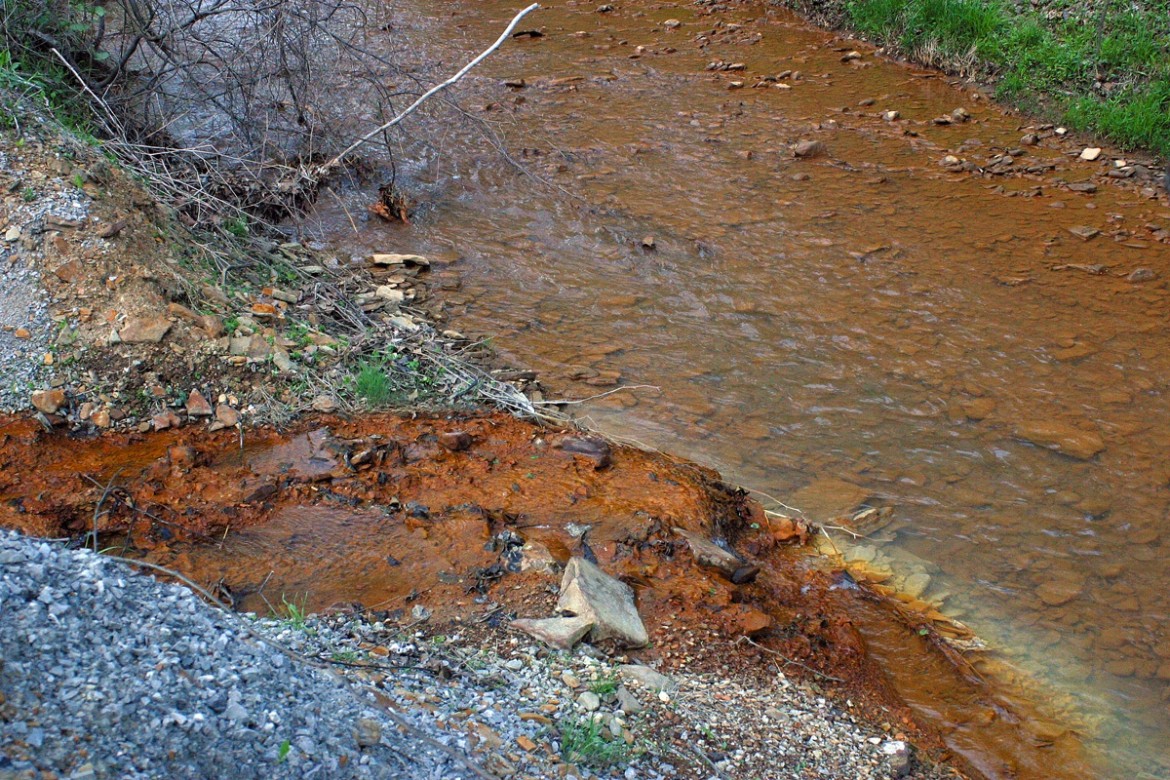
August 24, 2015; Earth Island Journal
There’s been 40 years of history to the movement to end the building of new prisons, but those who oppose over-incarceration have recently been joined by environmentalists concerned about the effects on the often-rural settings where these prisons are sited.
Pressured with a rate of overcrowding that is 51 percent above capacity, the Federal Bureau of Prisons is still happily building new super-secure institutions despite any rhetoric to the contrary. The site now being prepared in eastern Kentucky would be the fourth federal prison in Eastern Kentucky and the sixth federal prison in central Appalachia. And, as usual, it is being billed as an economic development initiative.
Prisons are common in rural America, and as Tracy Huling wrote in 2002, the prison-building boom of the 1990s quite literally changed the landscape:
Some of the most depressed rural areas in the United States have had significant infusions of prisons and prison work:
- On the west Texas plains, where both farm work and oil field jobs were in full retreat in the 1990s, eleven rural counties acquired prisons, where earlier only one prison existed. Overall, one of every five new rural prisons in the 1990s opened in Texas, which had the largest number of new rural prisons by far, with forty-nine.
- The Mississippi Delta picked up seven prisons in the 90s, added three in 2000-2001, with two more underway as of 2001.
- Nine prisons opened in the Southern Coal Fields region (Appalachia) and three new federal prisons were underway as of 2001.
- South central Georgia has a contiguous string of fourteen rural counties with new prisons, and 24 altogether in the state.
The new rural prisons of the 1990s had about 235,000 inmates and employed 75,000 workers at the end of the decade—averaging 30 employees for every 100 prisoners. All in all, about 350 rural counties have acquired new prisons since the start-up of the prison boom began in 1980, and more than half of all rural counties added prison work to their available employment mix during the final two decades of the century just past.
Sign up for our free newsletters
Subscribe to NPQ's newsletters to have our top stories delivered directly to your inbox.
By signing up, you agree to our privacy policy and terms of use, and to receive messages from NPQ and our partners.
This, then, becomes an environmental justice issue, with jobs being dangled as an elusive carrot. Eastern Kentucky, of course, is plagued by unemployment as coalmines have closed in recent years, but studies suggest that a plethora of secure local jobs is hardly a slam-dunk, as Huling points out:
The majority of public prison jobs, for example, do not go to people already living in the community. Higher-paying management and correctional officer jobs in public prisons come with educational and experience requirements which many rural residents do not have. Seniority (and in some cases union rules) in public corrections systems means that these prisons are typically activated with large cadres of veteran correctional personnel from other prisons. In addition, competition for jobs in depressed areas is fierce, so rural residents compete in a wider than normal market for available positions. The distances people drive to work at prisons are quite large, in most cases nearly double the average commuter range, according to Ruth Gilmore, a professor at UC-Berkeley. Gilmore’s study of prison towns in California shows that less than 20 percent of jobs on average go to current residents of a town with a new state prison. While over time that percentage increases, it is below 40 percent for all of California’s new rural prison towns.
The findings of Gilmore’s study in California are echoed in reports from disappointed local officials in prison towns across the country.
Studies performed by the Environmental Protection Agency’s Prison Initiative additionally found that prisons they inspected in the Mid-Atlantic region were plagued with violations, including air and water pollution, inadequate hazardous waste management, and failing spill control prevention for toxic materials. To make a bad proposition worse, the site being prepared in Eastern Kentucky was a former mountaintop-removal coalmine site that is still being drilled for gas. Dozens of endangered species are native to the habitat.
This has led the Human Rights Defense Center’s new Prison Ecology Project to join with a statewide grassroots group called Kentuckians for the Commonwealth (KFTC) in opposing the prison. KFTC opposes the prison more on economic grounds, having released a statement that reads, “It’s clear we need economic transition in our county and region, but history shows that prisons have not provided that. And, when we talk about transition, we desire a transition that is equitable to all people, not just those at the top.”
It will be interesting to watch how this previously marginalized movement gains traction and becomes more networked over the next few years. Prisons have always had multiple deleterious effects on communities, but it now appears that the coalition effort building among nonprofits will finally begin to surface a fuller range of them so that we can see the real damage being done not just to prisoners, but to community fabric and our environment.—Ruth McCambridge













